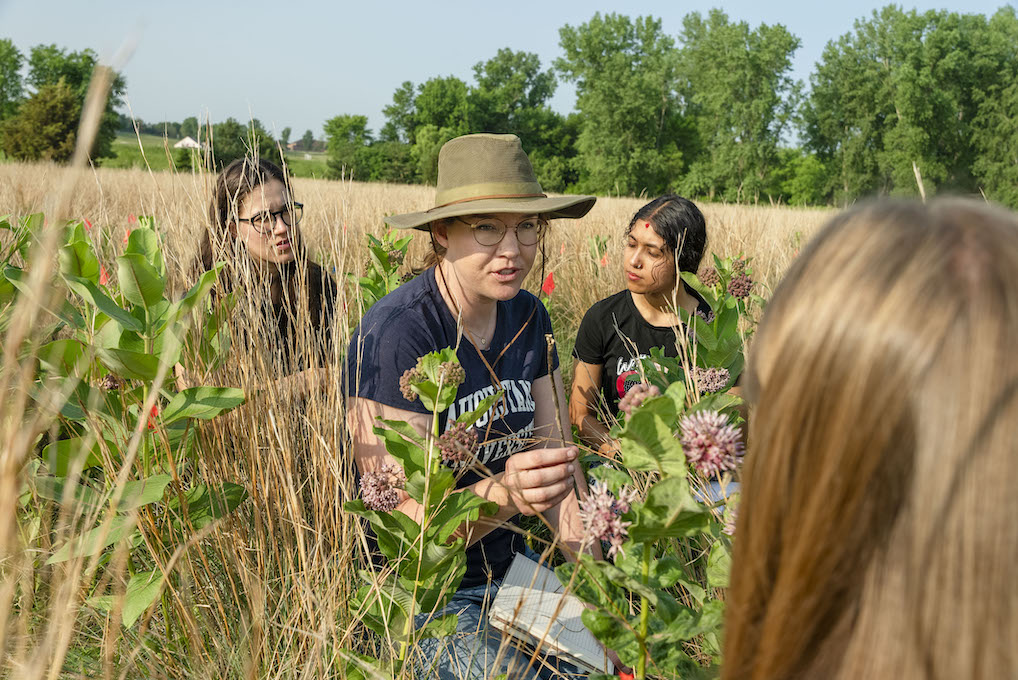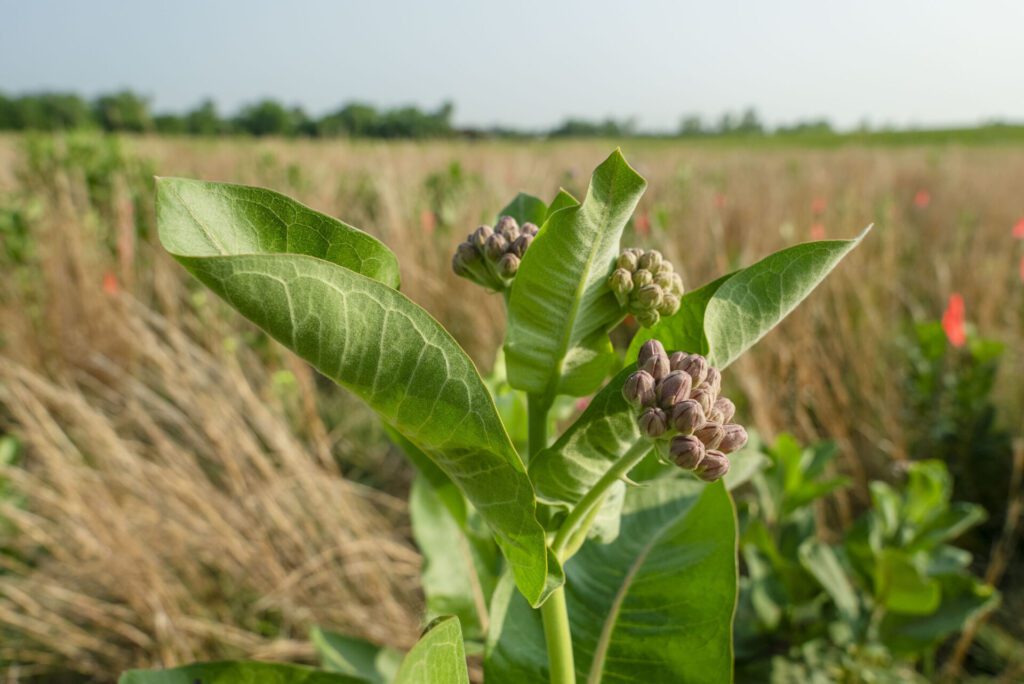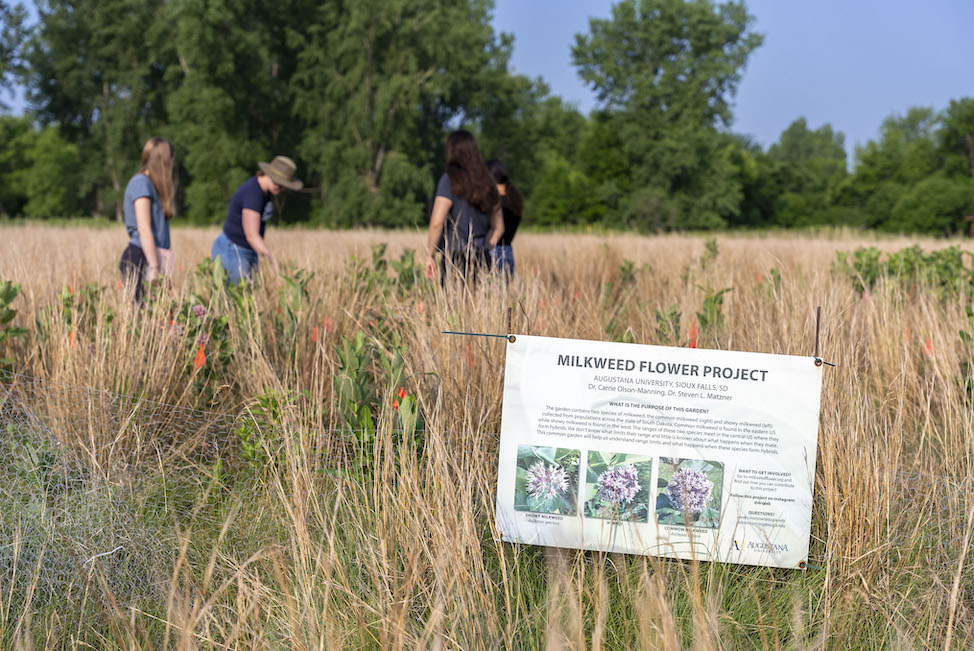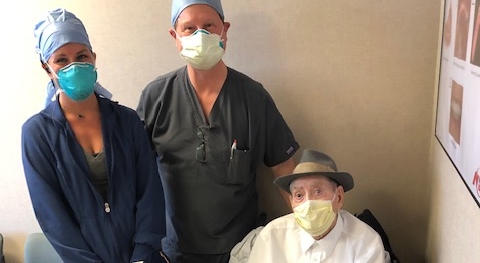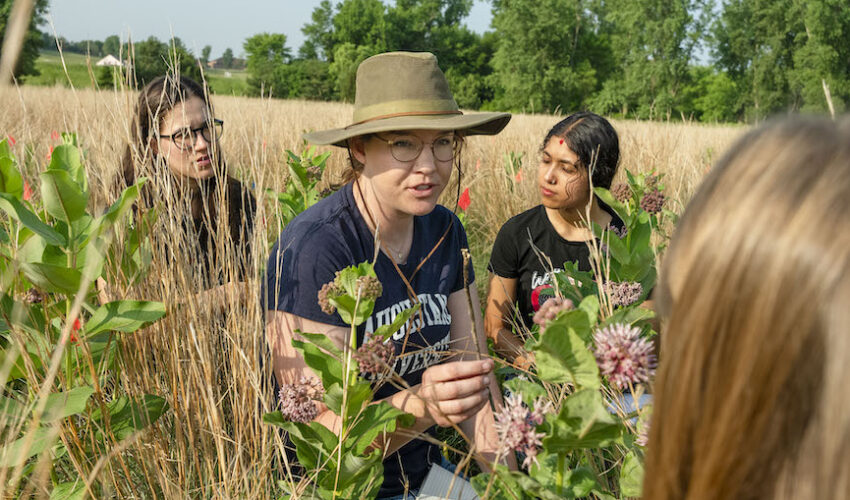Augustana professor awarded prestigious national honor with $1.2M for research
July 19, 2023
This paid piece is sponsored by South Dakota Biotech.
An Augustana University biology professor has received one of the National Science Foundation’s most prestigious honors – including more than $1 million to support her research.
Dr. Carrie Olson-Manning, associate professor of biology, has received a National Science Foundation Faculty Early Career Development Program, or CAREER, Award, which supports “early-career faculty who have the potential to serve as academic role models in research and education, and lead advances in the mission of their department or organization.”
The award, worth $1.2 million, will provide Olson-Manning with summer research funding for five years, sabbatical support and the funding to hire a postdoctoral scholar and a technician to assist in her research.
“National Science Foundation CAREER grants are prestigious awards for early-career scientists. Over the last two years, about 20 percent of all CAREER awards have been funded by NSF,” said Dr. Nathan Grau, associate professor of physics.
“To receive funding, Dr. Olson-Manning’s proposal was compared with all other CAREER proposals and not just from biology and not just from institutions similar to Augustana. Her proposal would have had to compete with other scientists from other disciplines and from other larger institutions. This fact lends substantial credence to the level of work that Dr. Olson-Manning is doing and will be able to continue to do with this award. Dr. Olson-Manning’s award is the first CAREER award for an Augustana faculty member.”
Olson-Manning’s research is centered on milkweeds, which are most commonly known as host plants of the monarch butterfly.
“We study two species of milkweed — one that grows East River and one that grows West River,” Olson-Manning said. “Not only do they grow there, they grow all the way to the coasts. Those two species basically take up the United States, meet here in central North America and then they hybridize, so they exchange genes. So we’re studying the impacts of that.”
The NSF CAREER Award also funds the undergraduate students who perform research with Olson-Manning during the summer or academic year. Approximately 95 percent of them are Augustana students.
“We’re so happy for Dr. Olson-Manning and have been excited to learn more about her work,” said Joni Ekstrum, executive director of South Dakota Biotech. “There’s a lot of impressive science happening under the radar in our state, and this national recognition is a great way to bolster the work she’s already doing and give it some well-earned attention.”
The hope is that the recognition “will inspire other junior faculty to reach for these highly visible awards to support their research trajectory, support undergraduate student research opportunities and support the mission of Augustana to provide innovative educational opportunities,” Grau said.
Olson-Manning grew up on her family farm in northwest Minnesota, where woods and lakes drew her to the field of biology. She began doing research as an undergraduate at the University of Minnesota as a freshman, working in labs across campus from cancer genetics to speciation in goldenrod gall flies. After graduation, she earned a Ph.D. at Duke University studying how plants use chemicals to defend themselves against herbivores. She then spent a few years after her Ph.D. as a postdoctoral fellow at the University of Chicago studying how organisms are able to make novel signaling molecules.
“I knew teaching undergraduates and mentoring them in the lab was important to me, in addition to continuing to study chemical diversity in plants,” she said. “Augustana was a perfect fit. I get to teach incredible undergraduates genetics, evolution, computer science and bioinformatics, and I get to train many of them to be scientists in my lab.”
We sat down with Olson-Manning to learn more about her work.
How did you arrive at your particular research focus? How long have you been studying milkweed, and what drew you to that subject?
I arrived at Augustana in 2016 knowing I wanted to work on a native plant that did interesting chemistry. I didn’t initially want to study milkweed because there are some things about the plant that make it hard to study. For one, it takes three years to flower after planting! This isn’t ideal when you’re interested in trying to understand what about a plant’s genetics and chemistry makes it more or less likely to survive and produce offspring. However, in my reading, I stumbled onto a passage in a native prairie field guide that noted that the common and showy milkweeds sometimes mated and produced hybrids. I mapped their distributions and found that the two species spanned the continent, but their ranges didn’t really overlap — they just kind of meet in the middle and stop. That region they meet and produce hybrids spans from the border of Minnesota and North Dakota to Oklahoma. I showed the map to Dr. Steven Matzner, a plant physiologist at Augustana, and he noted that the line where they meet is exactly on the 100th meridian. That’s the divide between humid eastern North America and the arid west. From that point on, we’ve been obsessed with trying to understand how these two species interact on an interesting ecological gradient.
What does your work involve throughout South Dakota? How are you executing the research, and how are students able to participate?
Science is always a team effort, and our undergraduates are an indispensable part of our team. We have planted milkweed gardens at the Outdoor Campuses in Sioux Falls and Rapid City and in the Pierre Grasslands, and we monitor those gardens for survival, reproduction and the kinds of specialized chemicals the two species make. In addition to studying their survival and chemicals, we also study their genetics and ecology. There is so much to learn about this system. The undergraduates are involved at every step and make contributions to all parts of the projects.
We’re also collaborating with K-12 teachers and the South Dakota Discovery Center to develop educational modules for schools across the state. We hope to plant milkweed gardens across South Dakota. Students can interact with these gardens, learning biology, chemistry and so much more but also contribute meaningfully to our understanding of how these species interact! The modules will align with state standards of math, science, reading and social studies to engage the students in our gardens from multiple angles.
What have some of your initial findings revealed, and what sort of impact might that make?
We’re learning so much about how far the hybrid zone extends and what traits allow each species to survive best in its own habitat. We’re learning that hybrids do not generally do as well as the parental species, but they are fertile, which means they could be a bridge to bring beneficial traits of one species into the other.
I understand that studying milkweed might not seem important, and on the surface, I kind of agree. Clearly, the work we’re doing won’t directly lead to a cure of cancer or solve climate change. But teaching students to think like scientists, to look at the world through a lens that allows them to figure out difficult problems, is a contribution that goes beyond any system they might study. Our work also has implications for understanding how species will adapt to both human disturbances and climate change. We also study biochemical pathways that could possibly be used as medicines or antibiotics. And, of course, milkweeds are the host plant of the monarch butterfly. Milkweeds offer such a fun opportunity to engage K-12 students and the public in our research.
What sort of difference will the NSF award make in your work?
This grant will allow us to answer questions and use techniques that would be too expensive or that we would not have the person-power to do. Most of the budget of any grant goes toward paying people, and this grant will pay the summer stipends of many undergraduates. It also allows me to bring on a technician who will help manage the lab, plan and prepare for large experiments and just be a great intellectual contribution. It will also allow us to bring on another Ph.D. as a postdoctoral scholar who will help lead large portions of the work.
What has your overall experience been like as a researcher and professor at Augustana and in Sioux Falls? What keeps you here, and what would you tell other researchers about it?
The students I teach and mentor in the lab are wonderful, and they are a large part of what keeps me here. I also have wonderful colleagues here at Augustana. My husband is the director of the POET Bioproducts Institute, and it’s been wonderful that we’ve both found such fulfilling careers in Sioux Falls.
Research at Augustana
Research is a recognized academic practice at Augustana, even though education is the primary focus, Grau said.
“Undergraduate research is deemed a high-impact practice by the American Association of Colleges and Universities and akin to other high-impact practices like studying abroad or participating in an internship,” he said. “Research provides an alternate medium to engage student learning. There is research done throughout all of the sciences on campus: biology, chemistry, physics, mathematics, nursing, exercise science. Faculty and students are publishing peer-reviewed original research. Since the faculty within the sciences and mathematics are diverse, the topics of research are diverse.”
Faculty rely on undergraduate students to help drive their research, he added.
“Even if a student does not expect to become a researcher as a career, the skills learned during a research experience are highly transferable,” Grau said. “For example, research students are required to communicate their ideas and to work as a team. Even disciplines like engineering and medicine recognize research as important preparation for their profession. For faculty, being practicing scientists means that we are still working on our craft. This keeps ideas in the classroom fresh. I can bring in new and relevant information to the classroom because I’m a practicing scientist. For me, my teaching informs my research, and my research informs my teaching.”
Since he joined Augustana in 2010, the number of students who are doing research in all of the science and math disciplines has increased, he added.
“This is a tribute to the faculty commitment to continue to pursue high-level research,” Grau said. “Our faculty is trained all over the country and around the world before joining the faculty. We bring our connections with us, such as those to National Laboratories and larger research institutions. We have also forged new connections with local partners, including Sanford, Avera, POET and Sanford Underground Research Facility. We have built a culture on campus where students expect to have research experience with Augustana faculty. And the faculty work to provide that opportunity.”
The undergraduate opportunities provided at Augustana are significant, Ekstrum agreed.
“This early, quality, hands-on research experience sets these students up for so many opportunities in their future,” she said. “It’s wonderful that Augustana is building these kinds of relationships around research in Sioux Falls and beyond because they bring broader implications for our entire industry.”
To connect with the growing biotech industry in South Dakota, visit sdbio.org.

